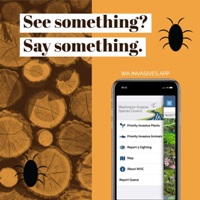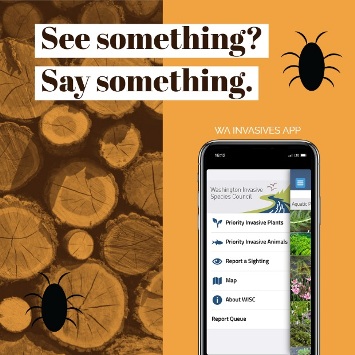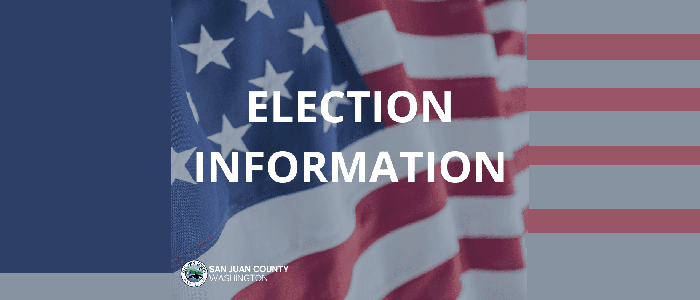— from Justin Bush of the Washington State Recreation and Conservation Office —
The free app enables anyone to report a plant or animal by collecting photographs, geographic coordinates, and sighting information. Users recreating in the backcountry also can collect data offline, when cellular service isn’t available. The app also acts as digital field guide.
“Invasive species damage land and waterways, harm local economies, ruin crops, weaken roads and other infrastructure, limit recreation and harm human health and wildlife,” said Justin Bush, executive coordinator of the Washington Invasive Species Council. “Left unmanaged, they will change the very way of life and the availability of experiences and resources critical to life in Washington state.”
The Washington Invasive Species Council, researchers and land managers are asking the public for help in preventing these damages by providing an easy to use tool to identify and report invasive species they find.
“You don’t have to be a biologist, entomologist, pathologist or botanist to help us detect invasive species,” Bush said. “Simply be aware of your surroundings. Learn the signs and symptoms of invasive species and then snap a photo and report anything you suspect might be a problem.”
“Our research has shown that educated and alert members of the public have found and reported 33 percent of all the new invasive insect pests recorded in Washington state during the past 25 years,” said Todd Murray, agriculture and natural resources unit director with Washington State University Extension.
In 2016, entomologists from the Washington State Department of Agriculture and Washington State University published an article in The American Entomologist that retold the story of how each new insect pest was discovered in Washington state.
“What we found was that participants in invasive species education and outreach programs were significant contributors to all the new detections and reports of new invasive insects,” Murray said. “Citizen Science really works.”
In managing invasive species, the council’s first priority is to prevent species from being introduced or spreading further within Washington. Early detection is key to its success.
“Being alert to new species and recognizing the signs of impacts of invasive species is step one,” said Greg Haubrich, state noxious weed control coordinator with the Washington State Department of Agriculture. “The second step is reporting what is seen to trigger a rapid response when management costs are low and complete eradication can be achieved.”
To play an active role in protecting Washington’s economy and natural resources from invasive species, download the WA Invasives app today.
To learn about the recent improvements and updates, join a September 24 Webinar.
To find opportunities for additional trainings in invasive plants, animals, insects, pathogens and first detector resources, visit the Washington Pest Watch Web page. The Web page features educational posters, brochures, Webinar recordings, and trainer presentations.
The Washington Invasive Species Council, established by the Legislature in 2006, provides policy level direction, planning and coordination for combating harmful invasive species throughout the state and preventing the introduction of others that may be potentially harmful.
**If you are reading theOrcasonian for free, thank your fellow islanders. If you would like to support theOrcasonian CLICK HERE to set your modestly-priced, voluntary subscription. Otherwise, no worries; we’re happy to share with you.**









